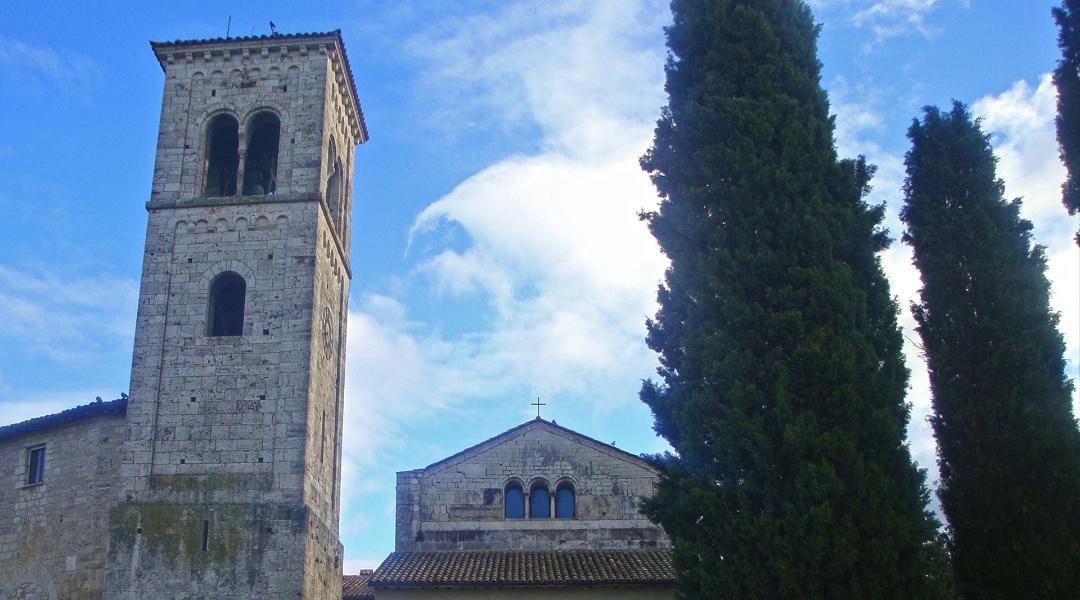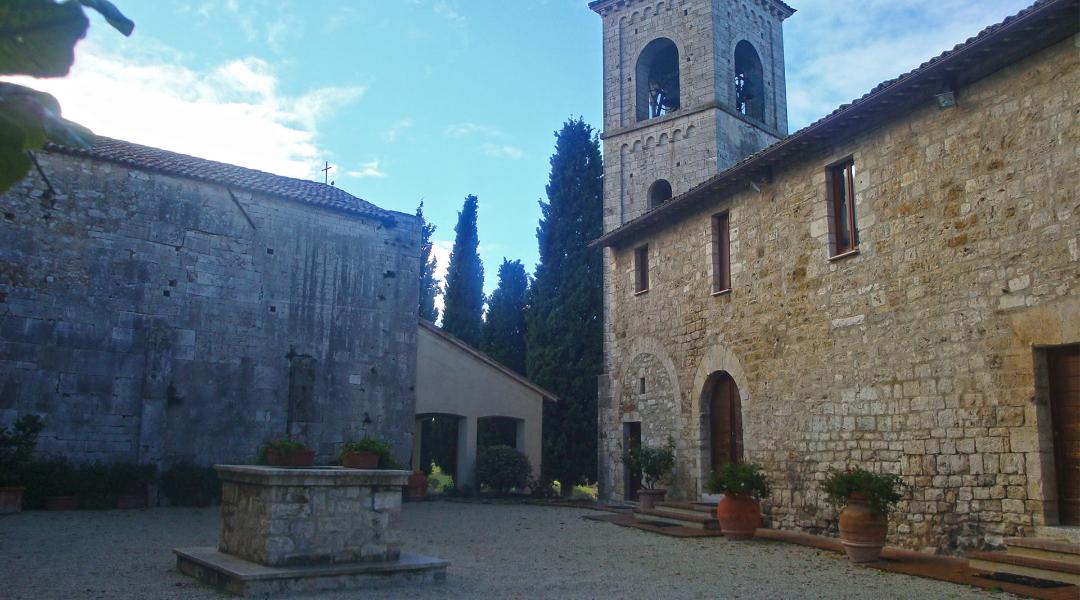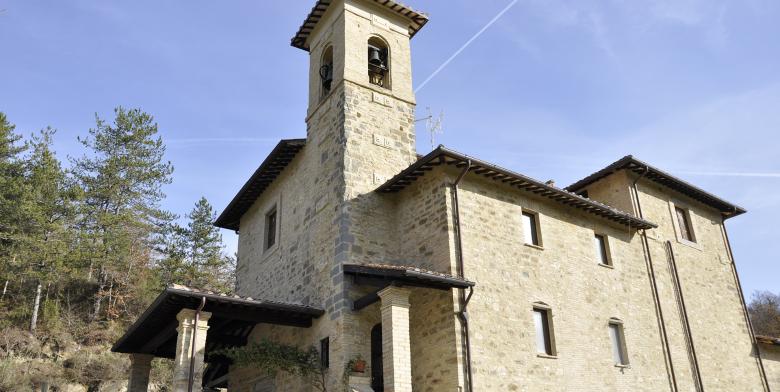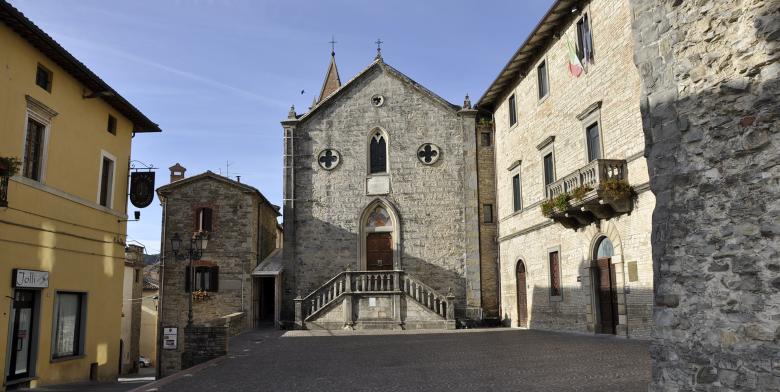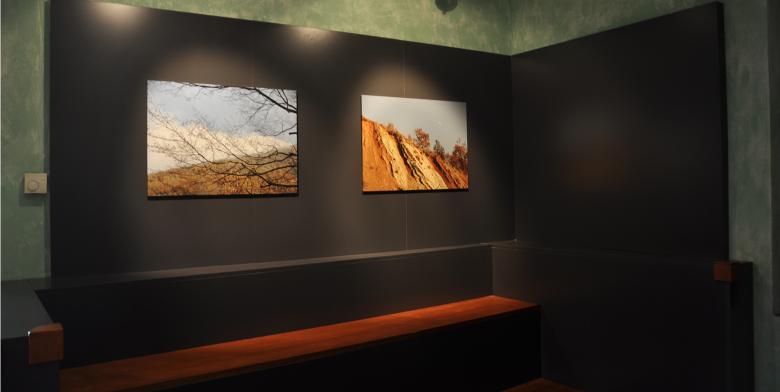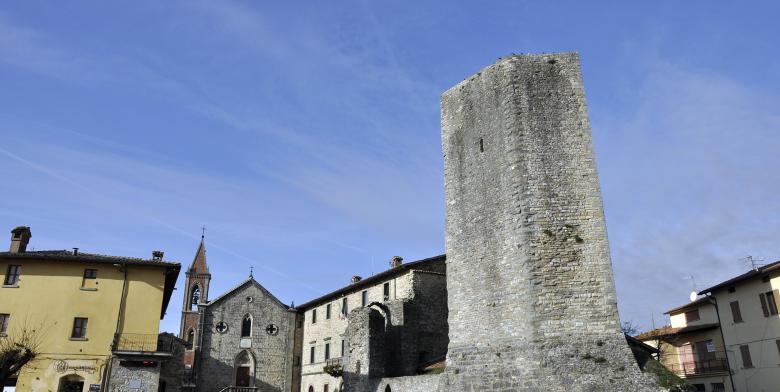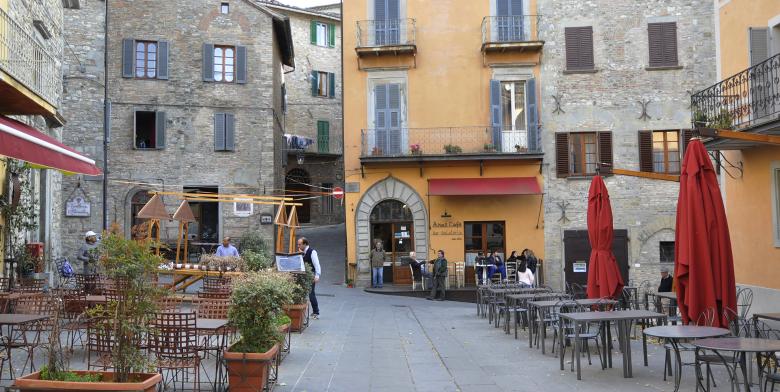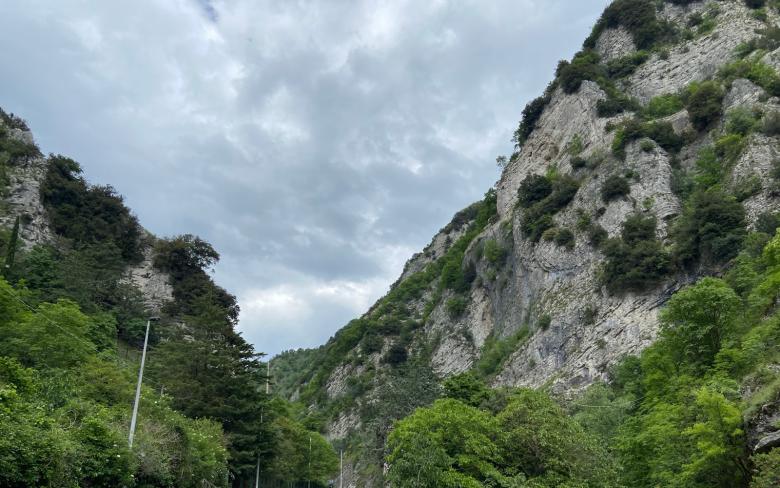Abbazia di San Faustino – San Faustino Abbey
Standing in an isolated position near Villa San Faustino, a hamlet in the Massa Martana municipality, the abbey was built on a Roman settlement, as can be seen by some ruins still present near the religious complex.
In Roman times, on the site of the abbey there had been a villa which was a summer residence of Giulio Marciano (Lucius Julius Marcianus), the administrator of the Roman colony Todi, and his wife Onesta. The couple were admired and respected by the locals, as can be seen from the plaque, which is today to the right of the mullioned window on the façade, reporting the positive opinions of the local inhabitants about the Roman official.
The villa fell into disrepair and it was thanks to the intervention of the Benedictines, in around the year 1000, that reconstruction of a building re-using material from the Roman house began.
























